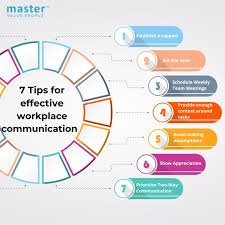Whether you’re a new hire or a seasoned executive, issues like miscommunication, project delays, or interpersonal conflicts will cross your path. The good news? Effective communication can help you navigate these hurdles with confidence. It’s not just about talking or sending emails; it’s about creating a shared understanding that drives teamwork and productivity. Learn how better communication can transform workplace struggles into successes.
The Role of Communication in Overcoming Workplace Challenges
At its core, communication is about exchanging information, but in a workplace setting, it’s much more. It builds connections, aligns goals and fosters collaboration. When communication breaks down, chaos often follows. Misunderstood instructions, unclear priorities, or unvoiced concerns can spiral into more significant problems.
Take project deadlines, for example. If one team assumes the deadline is flexible while another thinks it’s set in stone, frustration is inevitable. Similarly, conflicts between colleagues often arise because of misunderstood intentions or unmet expectations.
Effective communication makes sure that everyone is connected and linked with each other. It provides a foundation for resolving conflicts before they escalate and for tackling problems head-on. The simple act of clarifying expectations or actively listening to a team member can save hours of frustration and wasted effort.
Understanding the Root Causes of Workplace Communication Barriers
Communication barriers are more common than you think. Let’s unpack some of the most frequent culprits:
Cultural Differences
People often bring different communication styles to the table. For example, some cultures value directness, while others prioritise diplomacy. With awareness of these differences, messages can be understood, leading to misunderstandings.
Misaligned Expectations
Ever hear someone say, “I thought you meant this”? Misaligned expectations are a breeding ground for workplace challenges. When roles, deadlines, or deliverables aren’t clearly defined, confusion and frustration take over.
Technological Gaps
Technological innovation has provided various means for effective communication, but it has only sometimes succeeded. A poorly configured email chain or missed message on a platform like Slack can derail a project. And let’s not forget “Zoom fatigue”—when too many virtual meetings leave people drained and disengaged.
Lack of Active Listening and Empathy
One of the most significant barriers is the absence of active listening. People often listen to respond rather than understand. Empathy—the ability to put yourself in someone else’s shoes—is also critical. Without it, misunderstandings multiply, and relationships suffer.
Strategies for Clear and Concise Messaging
Clear messaging is the backbone of effective communication. Here are some ways to achieve it:
Simplify Your Language
Avoid jargon and overly complex phrases. Use straightforward language that everyone can grasp. For example, instead of saying, “Let’s optimise our workflow synergies,” try, “Let’s make our processes more efficient.”
Break It Down
If you’re explaining something complicated, break it into smaller, digestible parts. Think bullet points, numbered lists, or step-by-step instructions. This works wonders in both verbal and written communication.
Prepare for Difficult Conversations
Tough workplace conversations are unavoidable, whether it’s giving feedback or addressing mistakes. Having difficult conversation course online can help employees handle these discussions by teaching them to stay calm, be direct and work toward solutions.
Clarify and Confirm
Misunderstandings often happen when assumptions are made. Always confirm that the other person has understood your message. A simple “Can you repeat that back to me in your own words?” can prevent costly errors.
Fostering Open and Inclusive Communication
For a workplace to thrive, team members need to feel comfortable in sharing how they think, particularly their concerns. This doesn’t happen overnight—it requires a deliberate effort to foster openness and inclusivity.
Encourage Open Dialogue
Encourage a workplace environment where employee’ self-esteem is fulfilled and they feel their voice matters. Regular check-ins, team meetings and anonymous feedback tools can help employees express their thoughts without fear of judgment.
Build Trust
Trust is essential for the success of any team. Leaders can gain confidence by being open and honest, keeping their commitments and demonstrating a sincere concern for their team’s welfare.
Promote Psychological Safety
Psychological safety refers to establishing an environment where employees feel comfortable taking risks and expressing their ideas without the fear of being mocked. Stress and anxiety can hinder communication, so providing mental health awareness training for employees and providing resources not only supports employees but also strengthens team collaboration.
Utilising Technology to Enhance Workplace Communication
Technology is a powerful ally when used wisely. Here’s how to make the most of it:
Leverage the Right Tools
Tools like Slack, Microsoft Teams, or Zoom make collaboration seamless. Trello and Asana help teams track progress and keep everyone aligned. Use these platforms to share updates, track tasks and ensure nothing slips through the cracks.
Balance Digital and Face-to-Face Interactions
While digital tools are convenient, face-to-face communication—whether in-person or via video call—offers a personal touch that emails or messages can’t replicate. Strive for a healthy balance between the two.
Avoid Overloading
Too much technology can overwhelm employees. If your team is juggling emails, instant messages and project management software, consider streamlining the tools. Choose a few that work best for your team and stick to them.
Building a Resilient Workplace Through Communication
Communication is the foundation of a strong, resilient workplace. It helps teams navigate challenges, build trust and achieve shared goals. From breaking down language barriers to fostering open dialogue, the strategies outlined here can transform the way people interact.
By focusing on clarity, empathy, and the right tools, workplaces can overcome challenges and create an environment where everyone thrives. Communication is a skill that requires practice, persistence and improvement. With time and effort, better communication will become second nature, paving the way for a stronger, more united team.
